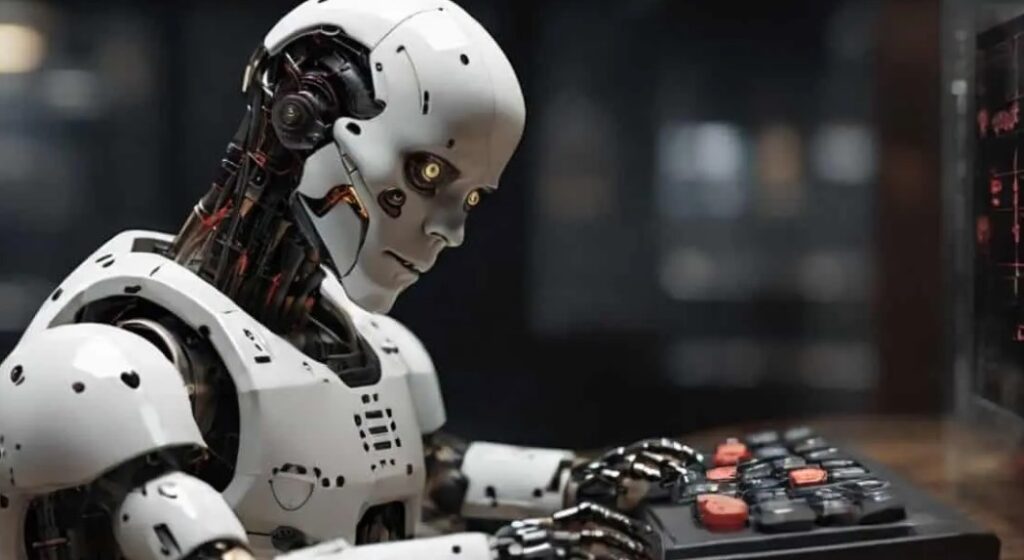Introduction

Man-made reasoning (simulated intelligence) has turned into a useful asset, improving everything from medical services to back. In any case, the idea of an “Artificial Intelligence Death Calculator” has caused a commotion, igniting banter on whether it’s a real device grounded in science or just a panic strategy intended to play on open trepidation.
For perusers inquisitive about whether this device has any genuine science behind it — or on the other hand on the off chance that it’s simply a computerized precious stone ball — this article will plunge into the subtleties, including its center highlights, restrictions, and suggestions.
1. What Is an Artificial Intelligence Death Calculator?
Man-made intelligence demise number crunchers guarantee to foresee when somebody could bite the dust by dissecting different wellbeing measurements. These instruments frequently think about clinical information, way of life decisions, and here and there even hereditary data. The charm is clear: everybody ponders their own mortality, and these instruments exploit that interest by offering apparently logical computations.
Real-World Examples
A few man-made intelligence based wellbeing mini-computers, similar to the Life span simulated intelligence Model from the Harvard T.H. Chan School of General Wellbeing, are established in broad clinical exploration and endeavor to foresee long haul wellbeing results by taking a gander at a scope of wellbeing factors. Be that as it may, not at all like some demise mini-computers, these devices center more around wellbeing enhancement than foreseeing passing.
External link for more information: Check out this article from Harvard Medical School on longevity research.
2. How Do These Calculators Work?
Most passing number crunchers use machine learning algorithms to examine enormous datasets of wellbeing data. By looking at designs inside the information, these apparatuses endeavor to make informed surmises about future in light of variables like age, BMI, way of life, and previous circumstances.
Key Features and Data Sources
AI death calculators draw from:
- Medical history: Past diseases or constant circumstances.
- Lifestyle habits: Diet, smoking, work-out schedules, and so on.
- Genetic predispositions: A few instruments dissect hereditary information to survey innate dangers.
Internal link: For more insights into machine learning in health predictions, visit our latest article on AI’s impact on healthcare.
3. The Science Behind AI Death Predictions
Artificial intelligence models are just pretty much as exact as the information they’re prepared on. Foreseeing a singular’s demise date is speculative because of the flighty idea of human wellbeing and life altering situations. While man-made intelligence can distinguish risk factors, it’s a long way from being a faultless indicator.
Data Quality and Ethical Concerns
Quality of data: An AI model built on incomplete or biased data can lead to unreliable predictions. Ethical concerns are also prevalent, as these tools touch upon sensitive aspects of human life.
External link: Explore World Health Organization’s discussion on the ethics of AI in healthcare here.
4. Are AI Death Calculators Just a Scare Tactic?
Regardless of the logical premise, many contend that man-made intelligence passing number crunchers incline more towards panic based manipulation than accommodating experiences. The promotion around such devices frequently overstates their capacities, driving some to consider them to be a panic strategy.
Case Study: The Apple Watch and Health Monitoring
Apple has added progressed wellbeing following elements, similar to pulse observing, to its gadgets. In spite of the fact that it doesn’t straightforwardly compute future, it can make clients aware of inconsistencies that could propose basic wellbeing concerns, displaying a more functional utilization of computer based intelligence in wellbeing without inciting dread.
External link: Learn more about Apple’s health tracking and its real-life benefits on Apple’s official site.

5. When Can AI Death Calculators Be Useful?
Some medical services experts find man-made intelligence demise mini-computers supportive in a clinical setting to assist patients with understanding way of life changes. As opposed to a strict “passing clock,” these devices can act as a reminder for individuals with high-risk ways of life.
Internal link: Find more on health tracking and preventative care on our healthcare technology section.
6. Top Features of an AI Death Calculator
For those considering utilizing a simulated intelligence passing mini-computer, here’s a summary of key highlights that make an instrument experimentally sound and morally capable:
- Transparency: A clear explanation of what data is collected.
- Data privacy: Secure storage and handling of sensitive data.
- Medical validation: Use of clinically approved algorithms.
- Focused insights: Tools that offer general wellness advice rather than fixating on death prediction.
External link: For further reading on data privacy, visit Electronic Frontier Foundation’s page.
7. Key Tweaks to Improve Accuracy
If you’re using a death calculator, here’s how to ensure the output is as accurate as possible:
- Update health data regularly (age, lifestyle changes, medical records).
- Consider a holistic health profile: Include comprehensive data beyond basic metrics.
- Use with a health professional: Involving a doctor can make predictions more actionable.
8. Limitations of the AI Death Calculator
Passing number crunchers are intrinsically restricted in their prescient exactness. Factors like unforeseen mishaps or unquantifiable occasions make such forecasts a greater amount of a ballpark estimation than a careful science.
External link: A deeper look into AI limitations is available on IEEE Spectrum.
9. Future of AI in Life Prediction: Beyond Death Calculators
Man-made intelligence’s genuine potential untruths not in anticipating passing, but rather in upgrading life quality. By zeroing in on wellbeing enhancement devices like wearable innovation, computer based intelligence can assist clients with checking continuous wellbeing measurements and change their ways of life appropriately.
Internal link: For additional future uses of artificial intelligence in wellbeing, look at our article on simulated intelligence driven health.

FAQ
Q: Can an AI death calculator actually predict when I’ll die?
A: Not exactly. These tools offer estimates based on known health risks and trends, not certainties.
Q: Are AI death calculators safe to use?
A: As long as privacy measures are in place, they can be informative but should not be taken literally.
Q: Is there any scientific validation behind these tools?
A: Some are based on clinical data, but many are experimental.
Video Link Suggestion
To help you understand how AI-based calculators work, here’s a YouTube video explaining AI in health prediction for further insights.
Conclusion
While the Artificial Intelligence Death Calculator cruncher idea is convincing, moving toward these devices with a basic eye is fundamental. Their expectations are best seen as broad wellbeing experiences instead of explicit passing gauges. Man-made intelligence can fundamentally affect how we might interpret wellbeing and life span, be that as it may, similarly as with all innovation, wariness and setting are critical.
- BISP 8171 Payments October 2025 – Check CNIC and Eligibility
- 8171 Web Portal Login and Registration 2025: Complete Guide
- BISP 8171 October 2025 Payment: 171 Payments via Clusters
- Ehsaas Phase 3 Payment: October 2025 Rs.13500
- BISP 8171 Web Portal 2025 – Check PMT Score Online